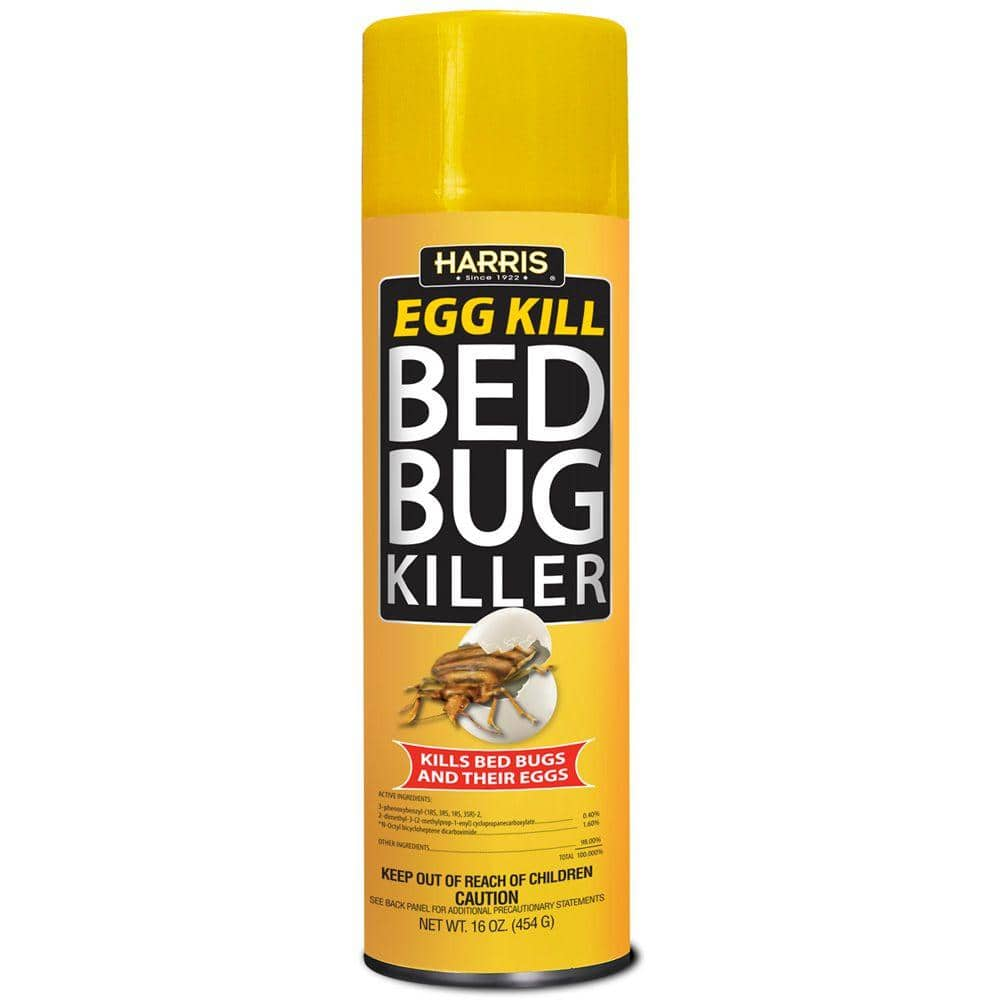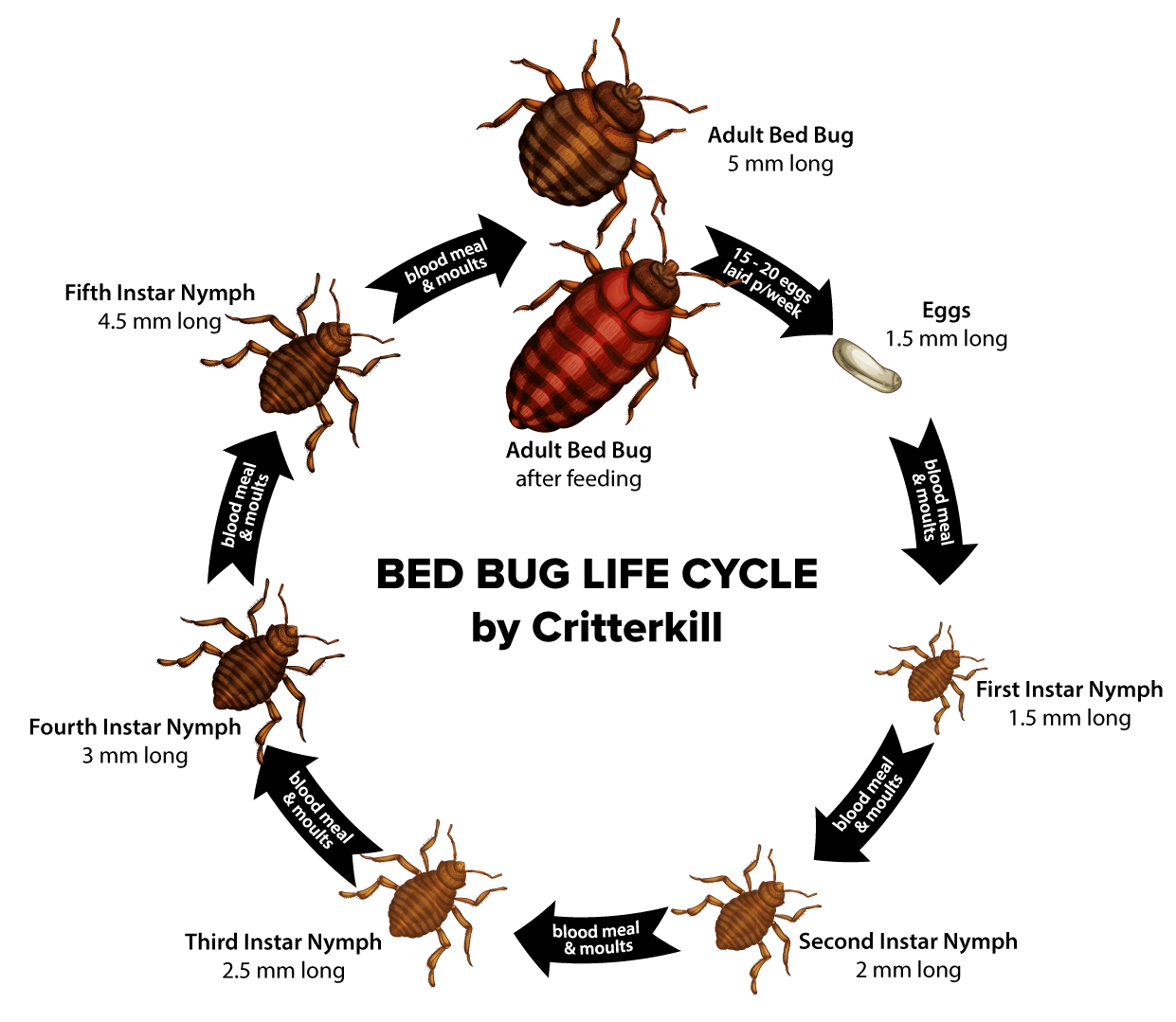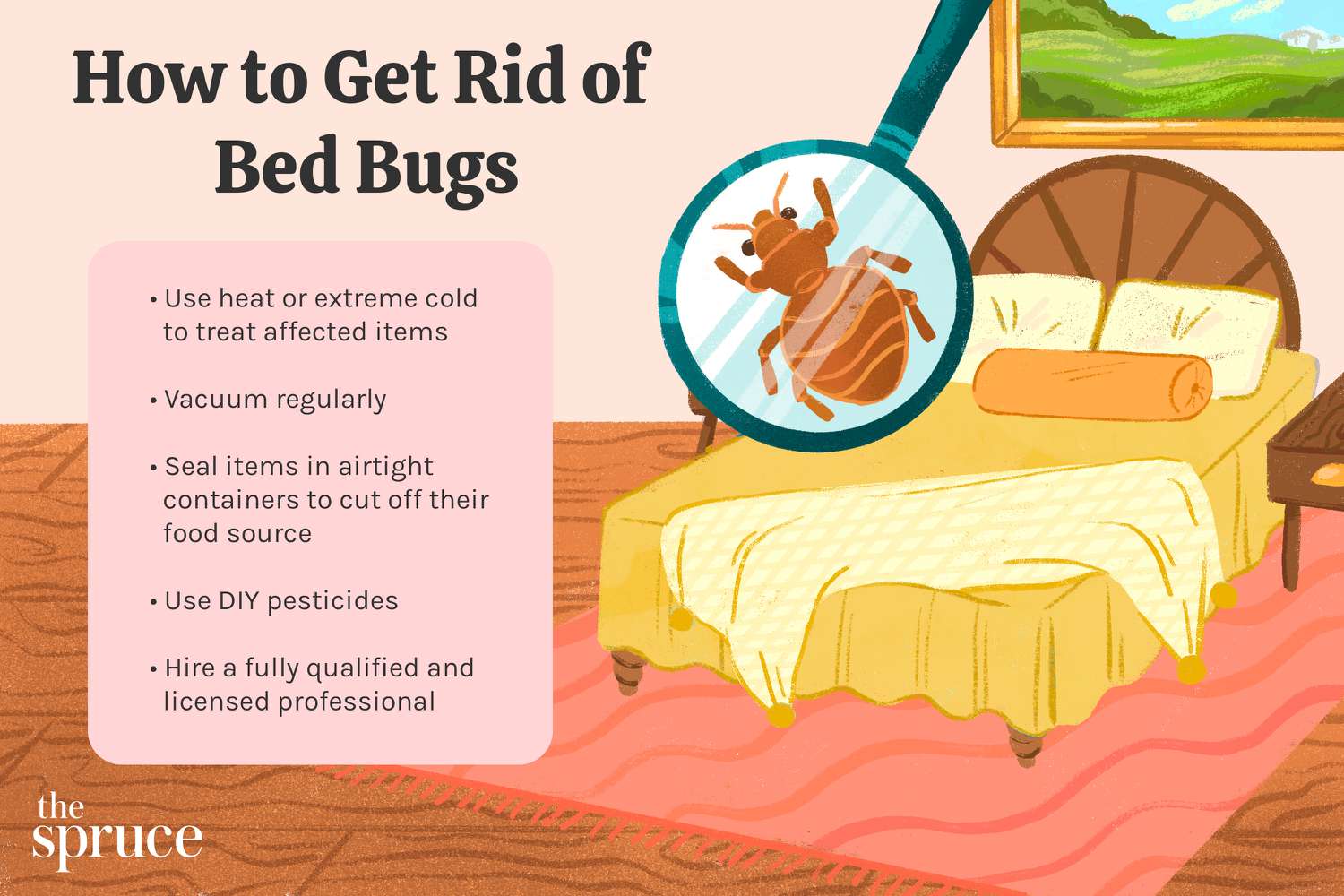To kill bed bugs, use a combination of professional-grade insecticides and thorough cleaning of infested areas. Bed bugs can be a major nuisance and cause various health problems, so it’s important to take immediate action to eliminate them from your home.
By following the steps outlined below, you can effectively eradicate these pests and prevent future infestations. Start by washing infested bedding and clothing in hot water, then vacuum all affected areas and dispose of the vacuum bag immediately. Apply insecticides to cracks and crevices where bed bugs may be hiding, and consider using mattress encasements to trap and kill any remaining bugs.
Repeat these steps as necessary until all signs of bed bugs are gone. Remember to consult professional pest control services for severe infestations.

Credit: www.homedepot.com
Identifying Bed Bugs
In order to effectively address a bed bug infestation, the first step is identifying bed bugs. By being able to recognize the signs of an infestation and knowing where to look for these pests, you can take proactive measures to eradicate them from your home.
Signs Of Infestation
- Blood stains on your mattress or sheets
- Dark spots (excrement) on bedding or furniture
- Eggshells or shed skins in areas they hide
Checking Common Hiding Spots
- Inspect mattresses and box springs for bugs or their excrement
- Check cracks and crevices in furniture and walls
- Examine headboards and bed frames for signs of infestation
Preparation
Preparing to kill bed bugs requires careful planning and execution. Follow these steps to effectively eradicate these pests from your home.
Clearing The Area
The first step in eliminating bed bugs is to create a clear and clutter-free environment. Begin by removing any items such as clothing, bedding, and drapes from the infested area. Seal these in plastic bags to prevent any bed bugs from escaping. Additionally, any non-washable items should be inspected and cleaned with a vacuum cleaner or a steamer using a high heat setting.
Furniture and mattresses in the infested area should be carefully examined. Use a flashlight to detect any signs of bed bugs, such as reddish-brown stains, eggs, or live bugs. If bed bugs are found, it may be necessary to dispose of the infested items. For furniture that can be salvaged, thoroughly clean and treat it to ensure the bed bugs are eradicated.
Washing And Drying Items
The next crucial step in bed bug eradication is washing and drying infested items. Gather all washable clothing, bedding, and linens and separate them from the non-washable items. Sort the items according to their colors and wash them on the highest heat setting recommended for each fabric type. Adding detergent and a capful of vinegar to the wash cycle can further aid in killing bed bugs.
After washing, place the items in a dryer and set it to a high heat setting. Ensure that the temperature reaches at least 120°F (49°C) to effectively kill any remaining bed bugs. Leaving the items in the dryer for at least 30 minutes can help guarantee their elimination. It is essential to ensure that the items are completely dry before removing them from the dryer.
Items that cannot be washed or dried using high heat should be professionally cleaned or treated. Contacting a pest control professional who specializes in bed bug removal can help ensure the proper handling of such items.
Non-chemical Treatment Methods
Dealing with a bed bug infestation can be a nightmare, but there are effective non-chemical treatment methods that can help you get rid of these pesky critters. These methods are not only safe for you and your family, but also for the environment. In this article, we will explore two commonly used non-chemical treatment methods for killing bed bugs: vacuuming and steam cleaning, and encasing mattresses and furniture.
Vacuuming And Steam Cleaning
Vacuuming and steam cleaning are practical and efficient non-chemical treatments to eliminate bed bugs. Vacuuming will help you suck up the live bed bugs, their eggs, and even the small nymphs hiding in your mattresses, furniture, and carpets. Make sure to vacuum every crack and crevice, including the seams of your mattress, the edges of your furniture, and the baseboards. After vacuuming, it’s crucial to dispose of the vacuum bag in a sealed plastic bag to prevent any potential re-infestation.
Steam cleaning is another effective non-chemical treatment for killing bed bugs. The high temperature of the steam can penetrate deep into cushions, mattresses, and furniture, killing any bed bugs it comes into contact with. When using a steam cleaner, make sure to carefully follow the manufacturer’s instructions and use a nozzle attachment to direct the steam into all the possible hiding places of the bed bugs.
Encasing Mattresses And Furniture
Another non-chemical method to tackle bed bugs is encasing mattresses and furniture. By covering your mattress, box spring, pillows, and furniture in bed bug-proof encasements, you can trap any bed bugs inside and prevent them from feeding or escaping. These encasements are made of a material with a tight weave that bed bugs cannot penetrate. Ensure that the encasements are labeled as “bed bug certified” to guarantee their effectiveness.
When using encasements, it’s important to note that they need to be left on for at least a year to ensure all bed bugs inside are starved and eventually die. Regularly inspect the encasements for any tears or openings and repair them immediately to prevent bed bugs from escaping.
Non-chemical treatment methods such as vacuuming, steam cleaning, and encasing mattresses and furniture can be highly effective in eradicating bed bugs from your home. Remember to combine these methods with other preventive measures such as regularly washing and drying your bedding on high heat, thoroughly inspecting second-hand furniture or clothing, and sealing cracks and crevices to prevent future infestations.
Chemical Treatment
Exterminate bed bugs effectively using chemical treatment, a proven method for eliminating infestations efficiently. This approach targets bed bugs at all stages of development, eradicating them completely from your home.
Choosing The Right Insecticide
When selecting an insecticide for bed bug treatment, ensure it is labeled specifically for bed bugs.
Opt for products that contain ingredients like pyrethrins, pyrethroids, or neonicotinoids for effective results.
Consider consulting a pest control professional to determine the most suitable insecticide for your situation.
Application Techniques
Follow manufacturer instructions closely when applying insecticides to ensure safe and effective treatment.
Apply insecticides to areas where bed bugs hide such as cracks, crevices, and along baseboards.
Use protective gear like gloves and a mask when applying insecticides to protect yourself from exposure.
Chemical treatment is a common method for combating bed bug infestations. It involves the use of insecticides to eliminate these pests.
Professional Extermination
Bed bugs can be a persistent and frustrating problem to deal with. When home remedies and DIY methods fail to eliminate these pesky pests, it may be time to consider professional extermination. Professional extermination involves the use of advanced techniques and treatments to effectively eradicate bed bugs from your living space, providing efficient and long-lasting relief from infestations.
When To Seek Professional Help
If your attempts to eliminate bed bugs on your own have been unsuccessful or if the infestation is significant, it’s advisable to seek professional help. Professional intervention becomes necessary when bed bugs continue to multiply despite using over-the-counter solutions, or if bites and sightings persist, indicating a widespread infestation.
Selecting A Pest Control Service
When choosing a pest control service for bed bug extermination, it’s crucial to thoroughly research and evaluate your options. Look for a reputable company with a proven track record in successfully eradicating bed bugs. Ensure that the company is licensed and insured, as this demonstrates their legitimacy and accountability. Obtaining quotes from multiple providers allows you to compare services and pricing, helping you make an informed decision.

Credit: critterkill.co.uk
Preventing Re-infestation
Preventing re-infestation of bed bugs is crucial to maintaining a bed bug-free environment. After successfully eradicating these pesky pests, it’s essential to implement effective measures to prevent their return. These preventative steps can help safeguard your home from a potential bed bug resurgence.
Creating A Bed Bug Proof Environment
When it comes to preventing bed bug re-infestation, creating a bed bug-proof environment is paramount. Ensure that all entry points for bed bugs are sealed, including cracks, crevices, and gaps. Utilize caulk and sealant to seal these openings effectively. Additionally, consider using bed bug-proof mattress and pillow encasements to further protect your sleeping area. These encasements act as a barrier, preventing bed bugs from accessing your bedding.
Regular Monitoring And Maintenance
In addition to creating a bed bug-proof environment, regular monitoring and maintenance are crucial for preventing re-infestation. Routinely inspect your living spaces for any signs of bed bugs, such as small reddish-brown stains on bedding or furniture. By promptly identifying any potential bed bug presence, you can take immediate action to prevent a full-blown infestation. Furthermore, regularly vacuuming and decluttering your living spaces can help eliminate potential hiding spots for bed bugs.
Dealing With Bed Bug Bites
Dealing with bed bug bites can be a distressing experience, causing discomfort and itchiness. Knowing how to alleviate symptoms and when to seek medical attention is crucial.
Symptom Relief
For immediate relief from bed bug bites:
- Wash the affected areas with soap and water.
- Apply a cold compress to reduce itching and swelling.
- Use calamine lotion or hydrocortisone cream to soothe the skin.
Seeking Medical Attention
If bed bug bites result in severe reactions, consider:
- Consulting a healthcare provider for proper evaluation.
- Receiving prescribed antihistamines or steroid creams if necessary.
- Monitoring for signs of infection such as increased redness or pus.

Credit: www.planetnatural.com
Educating Others
Do you need help in eliminating bed bugs from your home? Educating others on how to effectively kill bed bugs is crucial for a pest-free environment. Learn the best methods for eradication and protect your space from these pesky creatures.
Sharing Prevention Tips
One of the most effective ways to combat the dreaded bed bug infestation is by educating others about preventive measures.
Here are some essential tips to share:
- Regularly inspect your home for any signs of infestation, such as tiny bloodstains on your sheets or small dark spots on your mattress.
- Vacuum your carpets, upholstery, and mattress regularly to remove any potential bug hitchhikers.
- Encase your mattress and pillows with bed bug-proof covers to create a barrier between you and these persistent pests.
- Minimize clutter in your living space as bed bugs love to hide in cracks, crevices, and piles of clothes or clutter.
By sharing these simple yet effective prevention tips, you can help others protect themselves and their homes from these unwanted intruders.
Raising Awareness In The Community
Another crucial aspect of educating others about bed bugs is raising awareness within the community.
Here’s how you can spread the word:
- Organize community meetings or workshops where residents can learn about bed bug prevention, detection, and treatment.
- Distribute informational pamphlets or brochures at local gathering spots, such as libraries, community centers, and schools.
- Collaborate with local pest control companies or health authorities to host educational webinars or podcasts on this topic.
- Utilize social media platforms to share informative posts, videos, and graphics about bed bug prevention techniques.
By actively engaging the community and sharing valuable knowledge, you can help curb the spread of bed bugs and create a safer living environment for everyone.
Frequently Asked Questions On How To Kill Bed Bugs
How Do Bed Bugs Spread?
Bed bugs spread through infested items like luggage and used furniture. They can also move between adjacent units through wall voids and electrical conduits.
What Are The Signs Of A Bed Bug Infestation?
Common signs of bed bug infestation include red itchy bites, bloodstains on sheets, and the presence of molted bed bug skins.
What Is The Best Way To Eliminate Bed Bugs?
The best way to eliminate bed bugs is through a combination of professional pest control treatments, regular vacuuming, and washing infested items in hot water.
Can I Get Rid Of Bed Bugs Without Using Chemicals?
While it’s possible to reduce bed bug populations using non-chemical methods like heat treatment or steam cleaning, complete eradication typically requires professional-grade insecticides.
Conclusion
After implementing these effective bed bug control strategies, you can reclaim your peaceful sleep environment. Consistency is key in eradicating these pests. Remember to stay vigilant and thorough in your approach. By following the steps outlined in this guide, you can successfully eliminate bed bugs from your home.
Related posts:

I’m MD Tanvir, and I bring years of expertise gained from working closely with pest control companies to the forefront. My journey in the industry has inspired me to launch Bug Battler, a platform aimed at equipping people with the know-how to combat pests autonomously. Through Bug Battler, I aim to empower individuals with practical insights to tackle pest infestations effectively.

